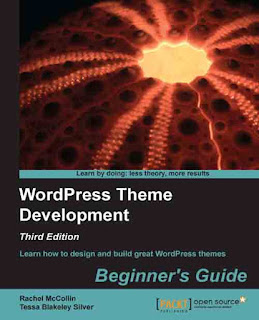Wordpress Theme Development Beginner's Guide 3rd Edition: Learn how to design and build great WordPress themes
Download
Introduction
WordPress has evolved significantly since the last edition of this book. It's now recognized
as much more than a blogging platform, and is the Content Management System (CMS)
powering 22 percent of the world's websites.
You may have used WordPress to build a site or two, perhaps using themes you've
downloaded from the WordPress theme repository, bought from a theme vendor, or
come with a theme framework. But if you want more control over your themes, you're
going to have to build you own.
These are the cornerstones of WordPress. Without them, WordPress sites just wouldn't
work. In this book, you'll learn how to take a design you create using static HTML and CSS
and turn that into a great WordPress theme. You'll create the template files your theme
needs and add extra functionality such as widgets and featured image support. We'll also
cover how to validate and debug your theme and how to release it to other developers.
By the end of this book you'll have built a fully functional WordPress theme and you'll
have the skills you need to build more, either for yourself or your clients.
What this book covers
Chapter 1, Getting Started as a WordPress Theme Designer, gives an introduction to the
world of WordPress theme building. It covers the basics of how themes work, theme
coding strategies using HTML and CSS, and setting up your theme design process.
Chapter 2, Preparing a Design for our WordPress Theme, takes you through the process
of creating a design for your theme, including wireframing, creating your design concepts,
and designing responsively in the browser.
Chapter 3, Coding it Up, is when you'll start to build an actual theme by taking your HTML
from Chapter 3 and inserting that into theme template files along with the PHP needed to
make your theme work.
Chapter 4, Advanced Theme Features, covers additional features you can add to your theme.
These include site settings, reading settings, permalinks, featured image support, and widgets.
Chapter 5, Debugging and Validation, shows you how to check for any bugs in your code and
test that your site meets the W3C requirements for validity. We'll also look at browser testing
and troubleshooting.
Chapter 6, Your Theme in Action, is all about shipping your theme to other WordPress
users and developers. You'll learn how to use the WordPress theme repository to make
your themes publicly available and the steps you need to take to package up a theme.
Chapter 7, Tips & Tricks, will help you take your WordPress theme development skills further.
You'll learn how to add some more advanced features to your theme, including additional
template files, conditional tags to display different content according to context, how to give
your theme's users access to the theme customizer, and how to optimize your theme for SEO.
Who this book is for
This book is aimed at web designers and developers with some experience of using WordPress
and of coding using HTML and CSS. It assumes you are familiar with the WordPress interface
and know how to manage a site and add content via that interface. You should also have
experience of writing HTML and CSS. The ability to write PHP is not needed but the book
does include some PHP code so you will learn something about this along the way.
Home Web Development Wordpress Theme Development 3rd Edition

